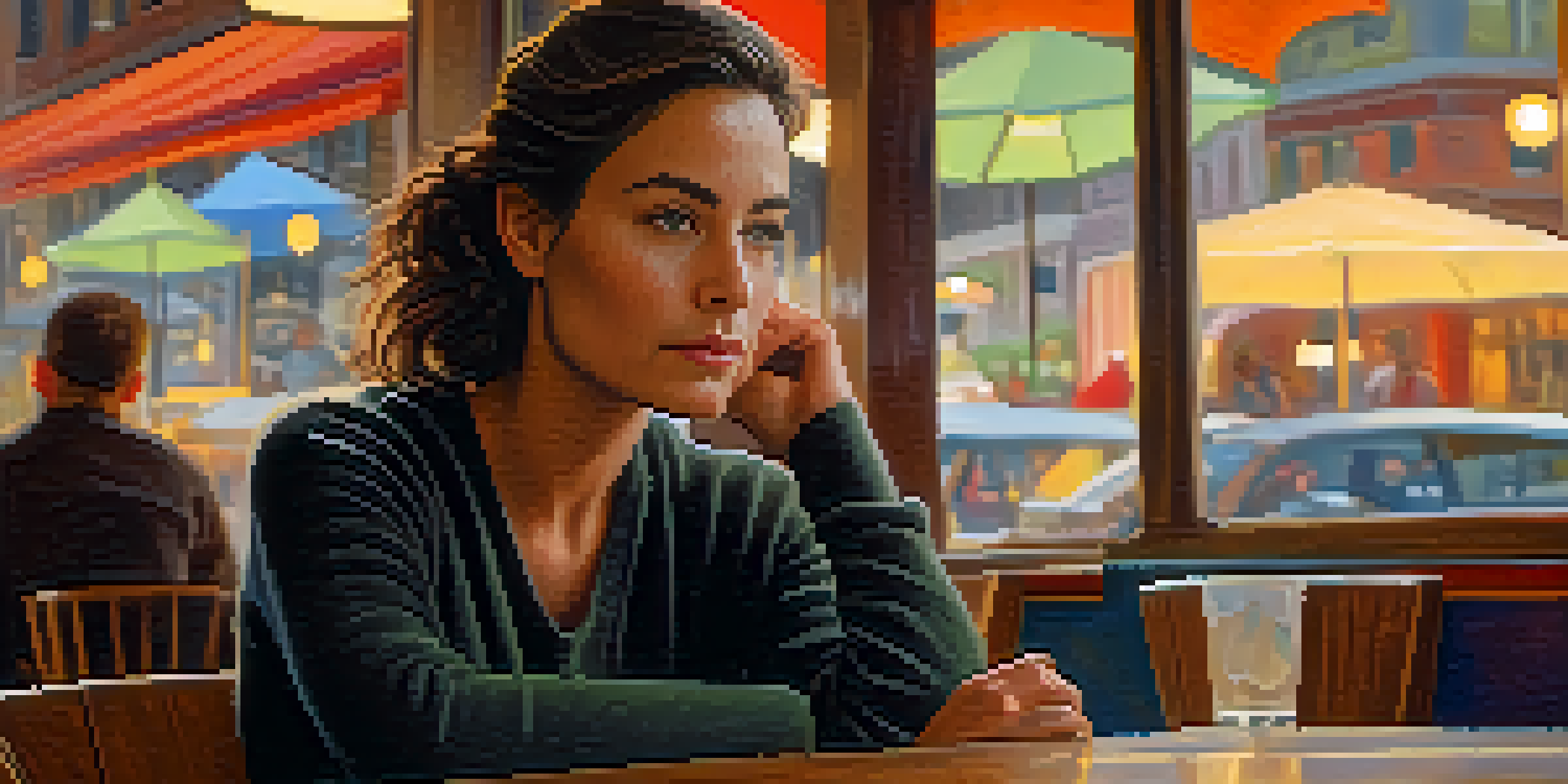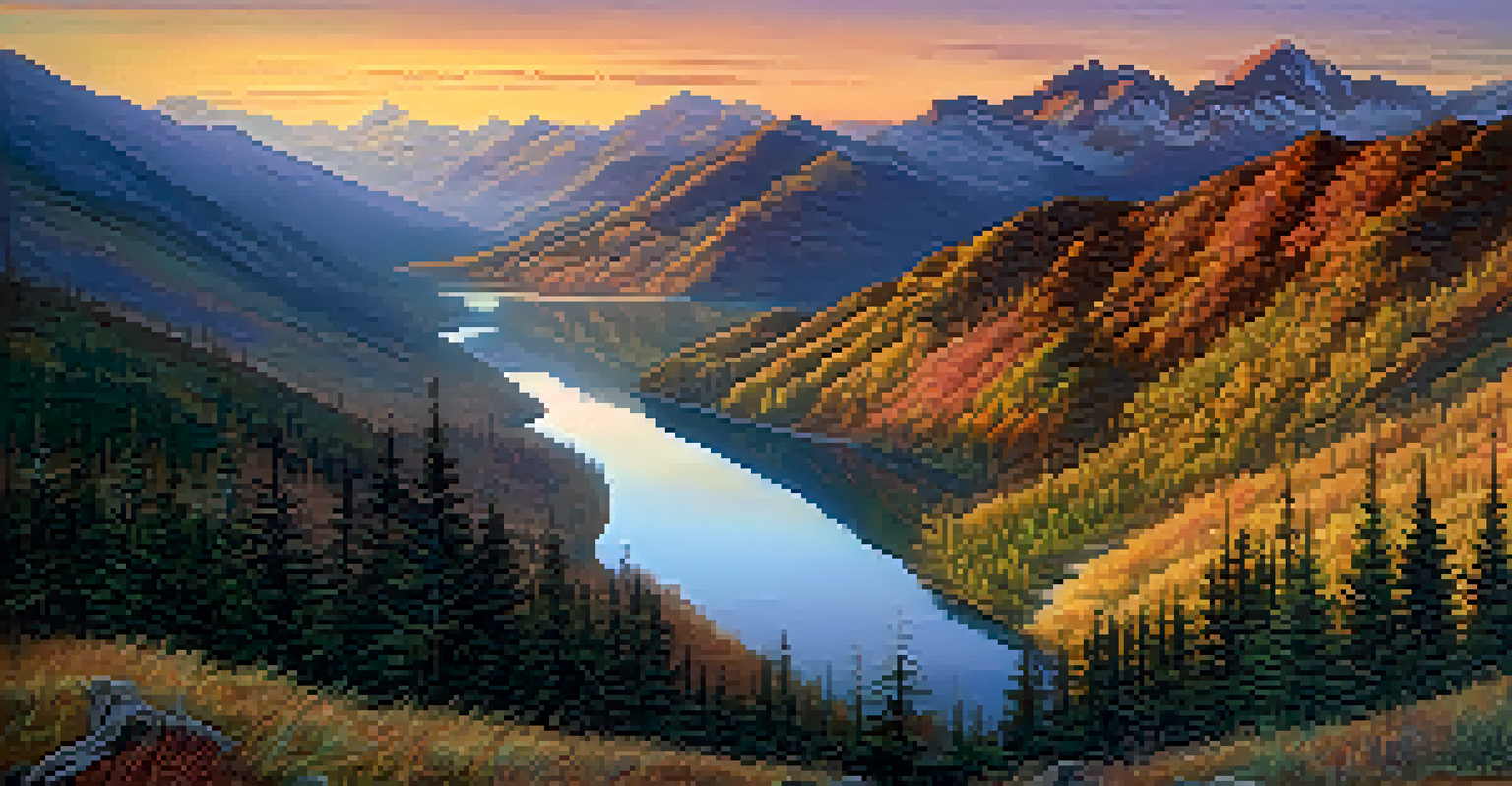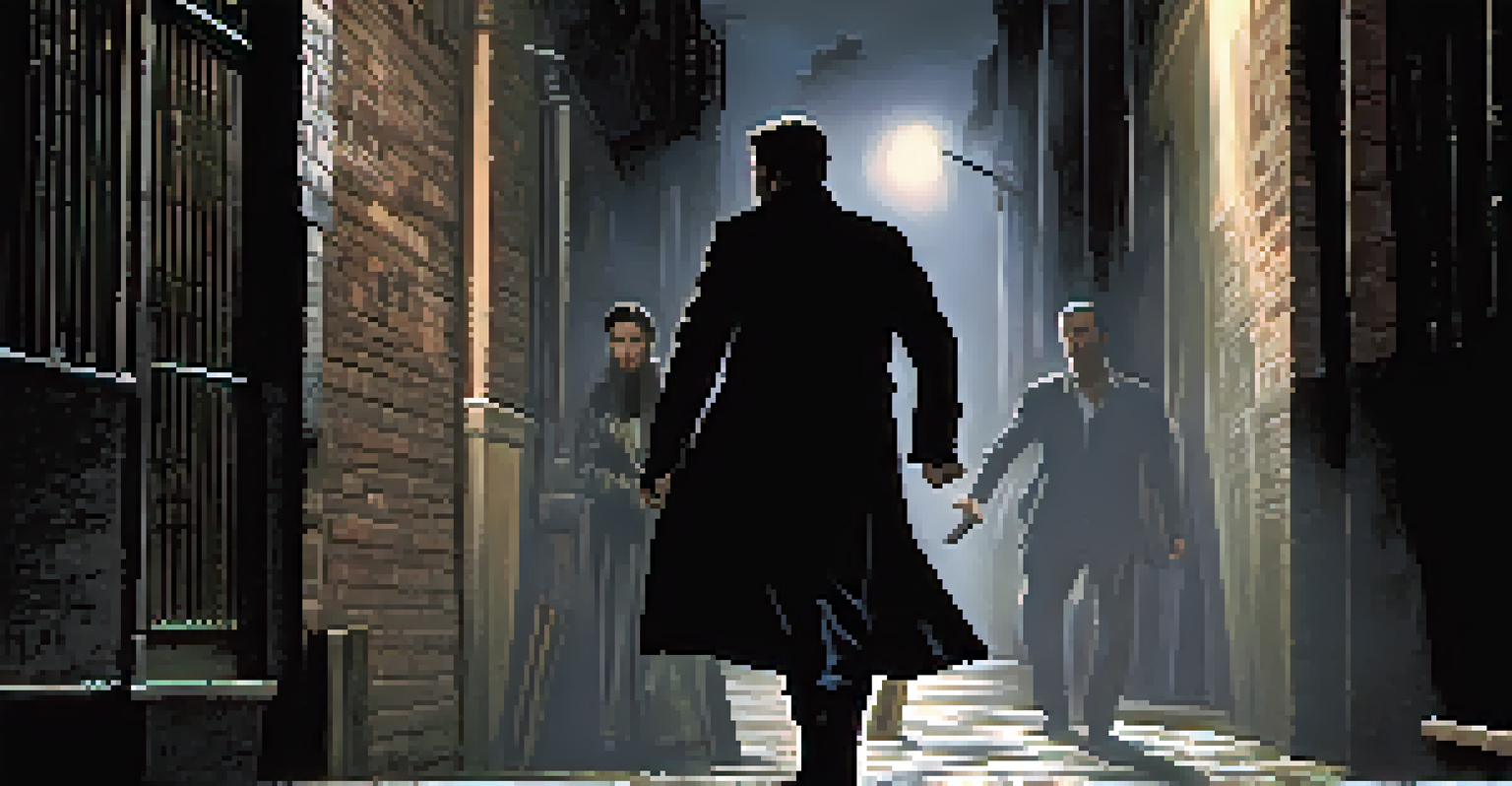The Role of Depth of Field in Visual Storytelling Techniques

Understanding Depth of Field: A Key Concept in Visual Media
Depth of field (DoF) refers to the range of distance within a photo or scene that appears sharp and in focus. It can be thought of as the area where subjects are clearly visible, creating a sense of depth in the image. In visual storytelling, mastering depth of field is essential, as it guides viewers' attention and shapes their emotional response to the scene.
Photography is the story I fail to put into words.
For example, a shallow depth of field can isolate a character in a crowded street, making them the focal point while the background blurs into a tapestry of colors and shapes. This technique not only highlights the character's emotions but also conveys their state of mind or situation. Conversely, a deep depth of field captures everything in focus, providing context and a fuller understanding of the environment.
By manipulating depth of field, storytellers can evoke specific feelings, enhancing the narrative. Whether through photographs or films, understanding how to use DoF effectively can elevate the overall impact of visual storytelling.
Shallow Depth of Field: Creating Focus and Emotion
Shallow depth of field typically occurs when the aperture is wide open, which allows for more light and a softer background. This effect is often used in portraits to draw attention to the subject’s face while blurring any distractions in the surroundings. By doing so, viewers can connect emotionally with the subject, making their feelings more palpable.

Consider a scene where a character is lost in thought at a café. With a shallow DoF, the character’s expressions are crystal clear, while the bustling café fades into a soft blur. This technique not only emphasizes the individual’s emotional state but also adds a layer of intimacy to the storytelling.
Mastering Depth of Field Matters
Understanding depth of field is crucial in visual storytelling as it shapes viewer attention and emotional response.
Ultimately, the use of shallow depth of field can transform a simple moment into a powerful narrative, allowing the audience to engage deeply with the emotions and experiences of the characters.
Deep Depth of Field: Context and Immersion in Stories
Deep depth of field, often achieved with a smaller aperture, keeps more of the scene in focus, which is particularly effective in landscape photography and wide shots in film. By having everything from the foreground to the background sharp, the audience can absorb the entirety of the scene, creating a sense of immersion. This technique is useful for setting the stage and providing context to the story.
Depth of field is a powerful tool for storytelling; it can draw the viewer into the emotions and actions of the narrative.
Imagine a wide shot of a beautiful mountain range with a winding river in the foreground. With a deep DoF, both the river and the mountains remain in sharp focus, inviting viewers to explore the entire landscape. This not only showcases the grandeur of nature but also establishes the setting as an integral part of the narrative.
In summary, using deep depth of field can enhance storytelling by creating a rich, detailed environment that engages and informs the audience about the world in which the characters exist.
How Depth of Field Influences Viewer Attention
The way depth of field is utilized can significantly influence where the viewer’s attention is directed within a frame. By controlling which parts of the image are sharp and which are blurred, filmmakers and photographers can guide the audience’s gaze to the most important elements of a scene. This manipulation is crucial for effective storytelling, as it helps emphasize key actions or emotions.
For instance, in a dramatic scene where a character is confronted by a villain, a shallow depth of field can isolate the two figures, making their interaction the focal point. As the background fades away, the audience’s attention is drawn solely to the tension between them, heightening the drama of the moment.
Shallow vs. Deep Depth of Field
Shallow depth of field isolates subjects for emotional impact, while deep depth of field provides context and immersion.
Understanding this principle allows creators to craft more compelling narratives, using depth of field as a visual tool to shape the viewer's experience.
The Artistic Aspect of Depth of Field in Visual Arts
Depth of field isn’t just a technical aspect of photography and filmmaking; it’s also an artistic choice. Artists often play with DoF to create mood and tone, using it as a means to communicate their vision. The decision to use shallow or deep depth of field can reflect the emotional undertones of the story being told.
For example, a filmmaker might choose a shallow depth of field for a romantic scene, creating an intimate atmosphere that draws viewers into the characters’ emotions. In contrast, a deep depth of field might be chosen for a documentary to present a more objective view of the world.
This artistic approach to depth of field allows creators to not only tell a story but also to express their unique style and perspective.
Practical Tips for Mastering Depth of Field
To effectively use depth of field in your own visual storytelling, start by understanding your camera settings. Familiarize yourself with how aperture, focal length, and distance from the subject influence depth of field. For instance, a wider aperture (lower f-stop number) results in a shallower depth of field, while a smaller aperture (higher f-stop number) increases it.
Experimentation is key. Try shooting the same scene with different aperture settings to see how it changes the focus and mood. This hands-on practice will help you develop an intuitive sense for when to use shallow or deep depth of field based on the story you want to tell.
Future of Depth of Field in Media
Advancements in technology allow for innovative manipulation of depth of field, expanding creative possibilities in digital storytelling.
Remember, depth of field is just one tool in your storytelling toolbox. When combined with other techniques like composition and lighting, it can significantly enhance the emotional impact of your visuals.
The Future of Depth of Field in Digital Storytelling
As technology advances, the use of depth of field in visual storytelling continues to evolve. Digital effects and editing software allow creators to manipulate depth of field in ways that were once only possible in-camera. This opens up new creative possibilities for filmmakers and photographers alike, enabling them to craft unique narratives that engage viewers in innovative ways.
For instance, some filmmakers are now using virtual reality (VR) technology to create immersive experiences where depth of field plays a crucial role in guiding the viewer’s attention. This type of storytelling allows audiences to explore environments and interact with characters in a more profound way.

Ultimately, as we move forward, the potential for depth of field in digital storytelling will only expand, providing exciting opportunities for creators to push the boundaries of their craft.